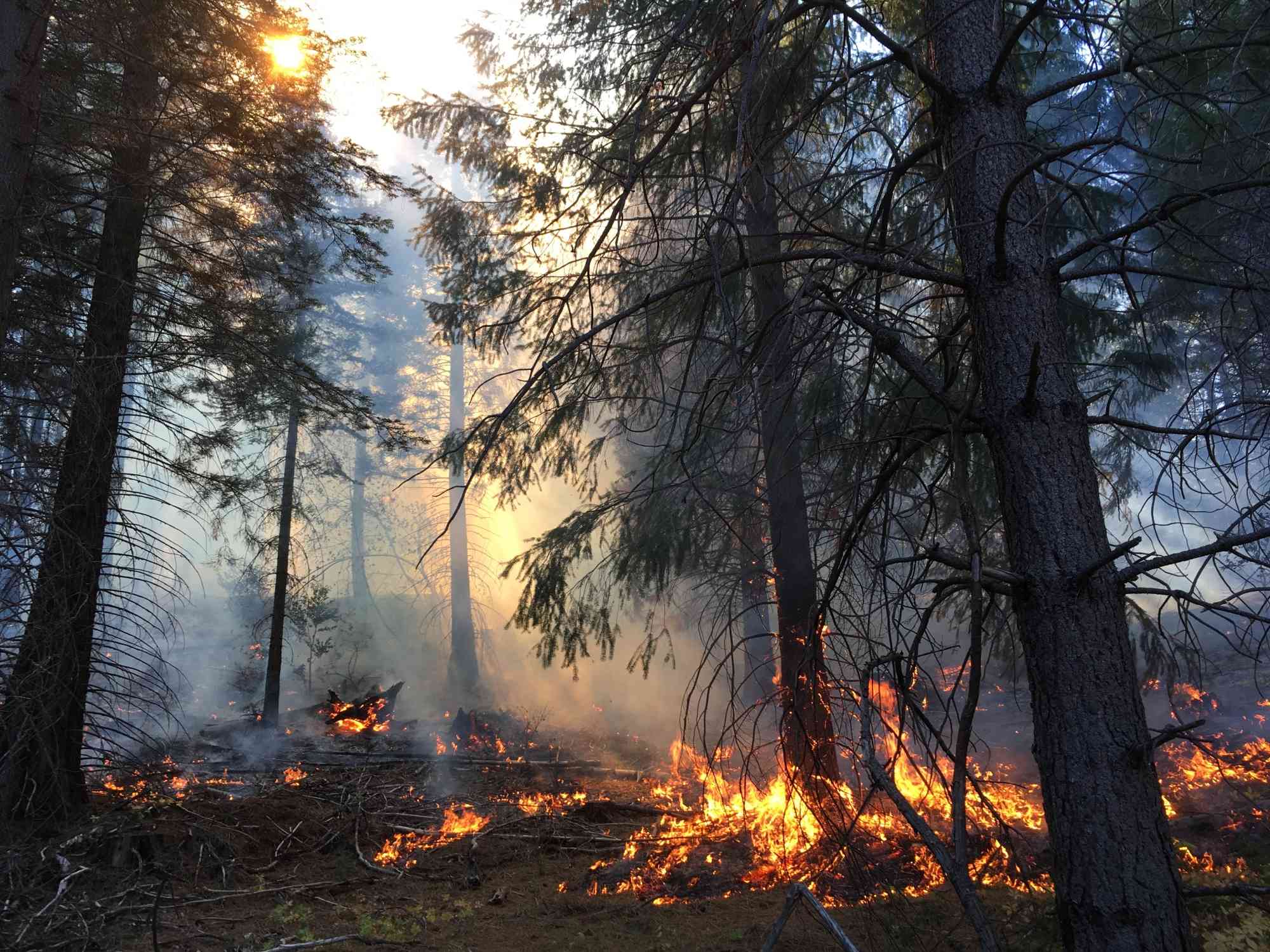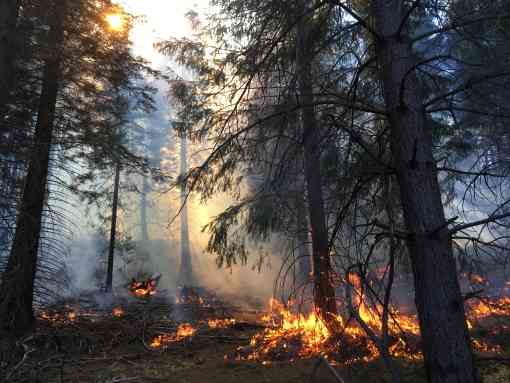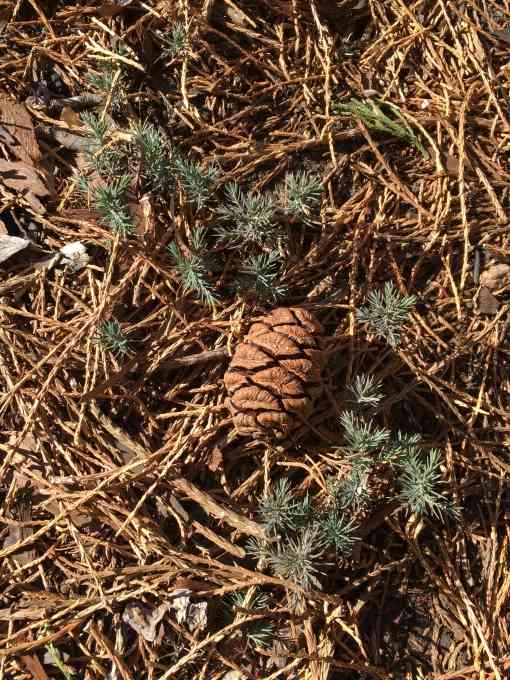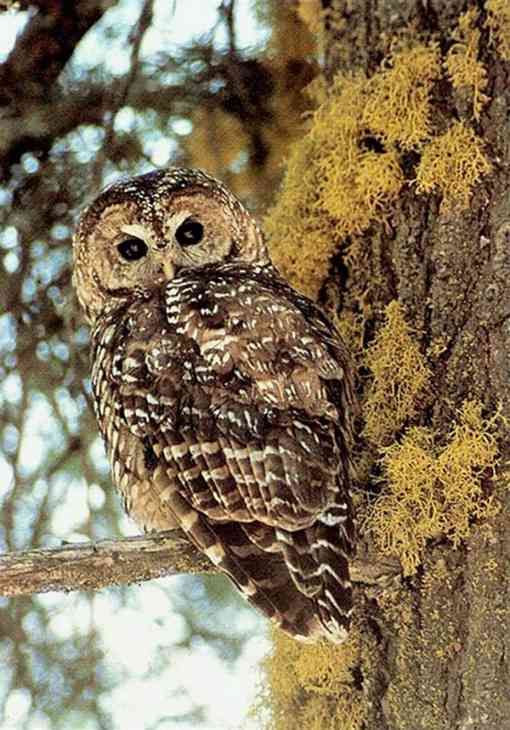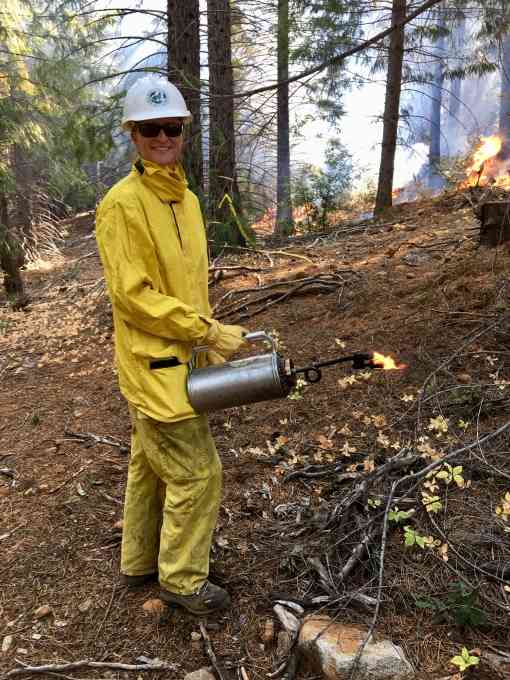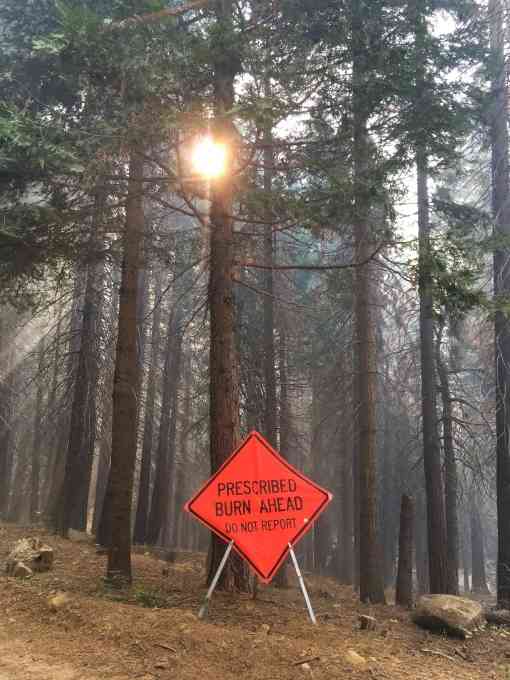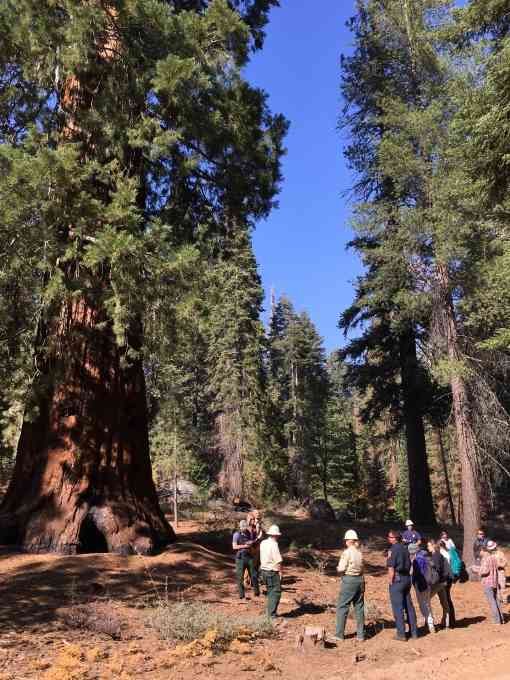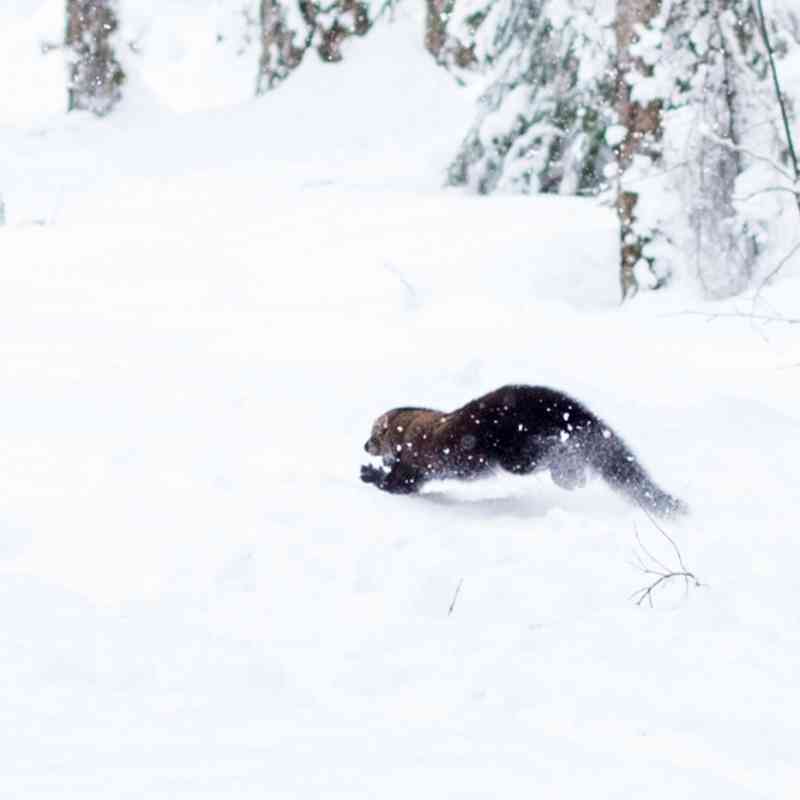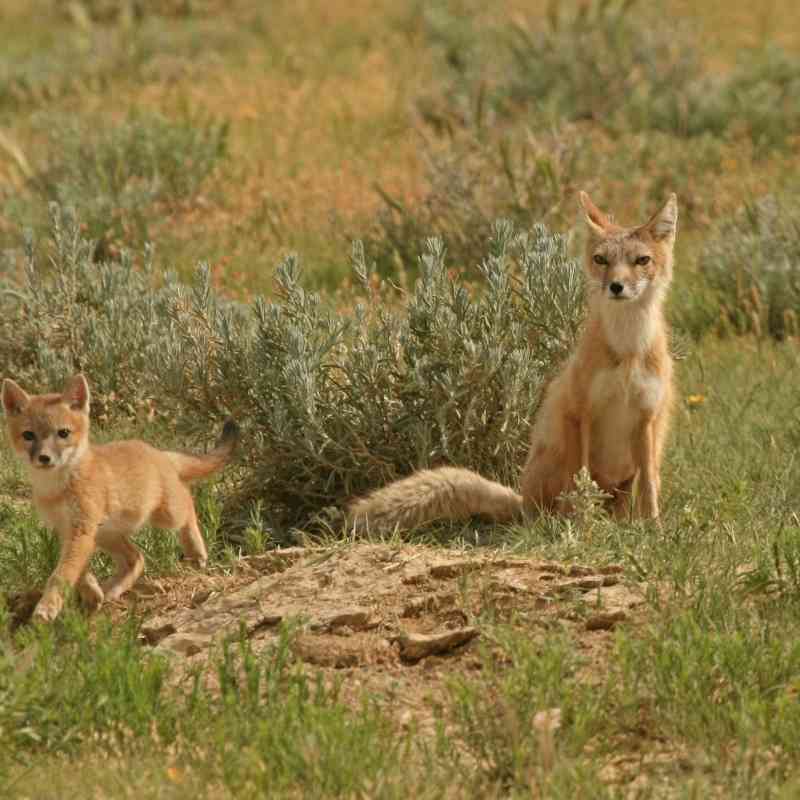Over countless centuries, fire has been among the most important processes shaping ecological communities in California. Our coniferous forest, oak woodland, open shrubland, and grassland ecosystems each evolved their own distinctive fire regimes with varying fire frequencies, intensities, patterns, seasons, sizes, and severities. These historical fire regimes revitalized wildlife habitat, raised groundwater levels, sustained surface water quality, and nourished the soil. Mixed-severity fires leave a mosaic of effects, including some patches burned at high severity and relatively cool burns in other areas. By thinning dense thickets of trees and shrubs, these patchy fires could help to limit damage from subsequent large, out-of-control, wind-driven wildfires.
Beneficial fires can start naturally with a lightning strike, like the Lions Fire that the U.S. Forest Service (USFS) managed for ecological benefit in the Ansel Adams Wilderness this past summer. Good fires can also be prescribed and intentionally ignited, as Indigenous people have done throughout most of California for millennia. Over time, the historical fire regime has produced and sustained many fire-dependent species, such as giant sequoias, and entire fire-adapted ecosystems like the coniferous forests of the Sierra Nevada.
More recently, we’ve experienced overly severe, extensive fires that have destroyed habitats, eroded hillsides, filled streams with sediment, and displaced native plants with exotic, invasive species.
In twentieth-century California, aggressive fire suppression policies (supported by public fire prevention campaigns that featured characters like Smokey the Bear) combined, paradoxically, with the increased accidental ignitions caused by an exploding human population to disrupt historical fire regimes throughout the state. From north to south, California’s ecosystems now suffer from an excess of randomly ignited fires like the Carr, Camp, and Thomas fires and a deficit of thoughtfully designed and prescribed or managed fires. In the Sierra Nevada, many areas that historically had burned every dozen years or so experienced no fire at all over the course of the last century or more. As a result, forests that would have otherwise been regularly cleared by fire have become dense and dangerously overstocked with shrubs and small-to-medium sized trees. This vegetation acts as ladders that can carry fire up into the tree canopy, causing high-intensity crown fires and leading to significant mortality of trees.
Indigenous people have employed fire since time immemorial to sustain ecosystems and their interconnected plant and animal communities. In the past, these prescribed, cultural or ecological burns took place in widespread locations, including areas now designated as wilderness. Benefits from such burns may include that they:
- clear shrubs from an area to facilitate travel, make the movements of people and animals more visible, and make food resources more accessible to both people and wildlife.
- drive or attract game.
- increase the diversity and production of bulbs, tubers, fruits, and seeds (such as manzanita berries and acorns), thus sustaining the food web for a diverse set of animals, including deer, bear, and smaller animals that, in turn, may be prey for rare predator species such as spotted owls and Pacific fishers.
- maintain firebreaks, reduce fuel levels, and lessen the extent of intense, severe wildfires.
- reduce insect pests and plant parasites.
- sustain meadows, water storage, surface water, spring flow, and stream flow.
Today, restoration of a fire regime of repeated, expertly timed burns of varying extent and intensity, conducted by knowledgeable practitioners, could support whole suites of cultural and ecological resources. The good news is that there is growing understanding and agreement that in order to increase resiliency, gain ecological and cultural benefits, and reduce potential for devastating damage from future wildfires, we must restore fire to our fire-adapted ecosystems when and where it is safe to do so.
However, challenges remain in getting more fire on the ground. Barriers to restoring fire include but are not limited to lack of funding and capacity, air quality and public health impacts from smoke emissions, and the discounting of local and Indigenous ecological knowledge.
Together, varied stakeholders are working to burn through these barriers. The State Legislature last year bolstered state investments for fuels reduction and prescribed fire use by $1 billion to increase the focus on wildfire hazard planning for human communities, among other positive fire-related outcomes. Understanding is increasing of trade-offs between uncontrolled wildfire smoke outputs and emissions from controlled, prescribed fire done at the right time, in the right place, and under the right conditions, and interest is growing in working with the right people — including expert Indigenous practitioners — who can help ensure that prescribed burns achieve both ecological and cultural goals.
In fact, collaborative efforts are key to expanding the use of fire. The Dinkey Landscape Restoration Project on the western slope of the southern Sierra was one of the first projects approved a decade ago under the federal Collaborative Forest Landscape Restoration Program. The “Dinkey Collaborative” brings together timber industry representatives, off-road vehicle enthusiasts, environmentalists, local landowners, tribes, a utility company, and others near Shaver Lake, northeast of Fresno to work alongside Forest Service specialists to identify priority projects for science-based restoration work, including forest thinning projects and prescribed burning to reduce fuels.
On a broader scale in the same region, the Southern Sierra Prescribed Fire Council (SSPFC) serves as a venue for fire specialists, Cal Fire, USFS, national parks, academic institutions, tribes, conservation organizations, and other interested parties to work together to promote, protect, conserve, and expand the responsible use of prescribed fire and cultural fire in the southern Sierra Nevada’s fire-adapted landscapes. The SSPFC also works to promote public understanding and acceptance of the ecological and cultural importance of burning.
Another important effort is the Fire MOU Partnership, which brings together interested parties to increase the use of managed fire — including prescribed fire and natural ignitions — for ecological and other resource benefit. The Partnership includes federal and state land management agencies, air quality control districts, conservation organizations, the timber industry, prescribed fire councils and others, all dedicated to creating landscapes that are resilient to the effects of climate change and reducing risks to human communities near wildlands.
As they say, it takes a village — and returning fire to California’s natural ecosystems will certainly take an “all hands on deck” approach. It’s taken more than a century to create the conditions we see today, and it will take time and significant investments to restore our ecosystems to a healthy state. Working together, we can make a lasting difference in restoring fire for cultural and ecological benefits.
Author
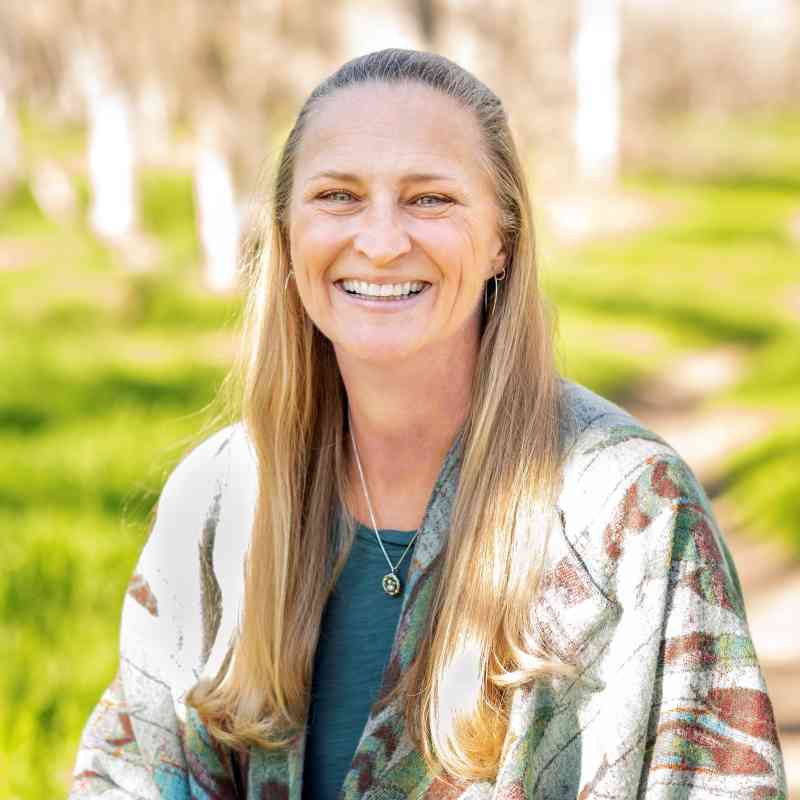
Pamela Flick
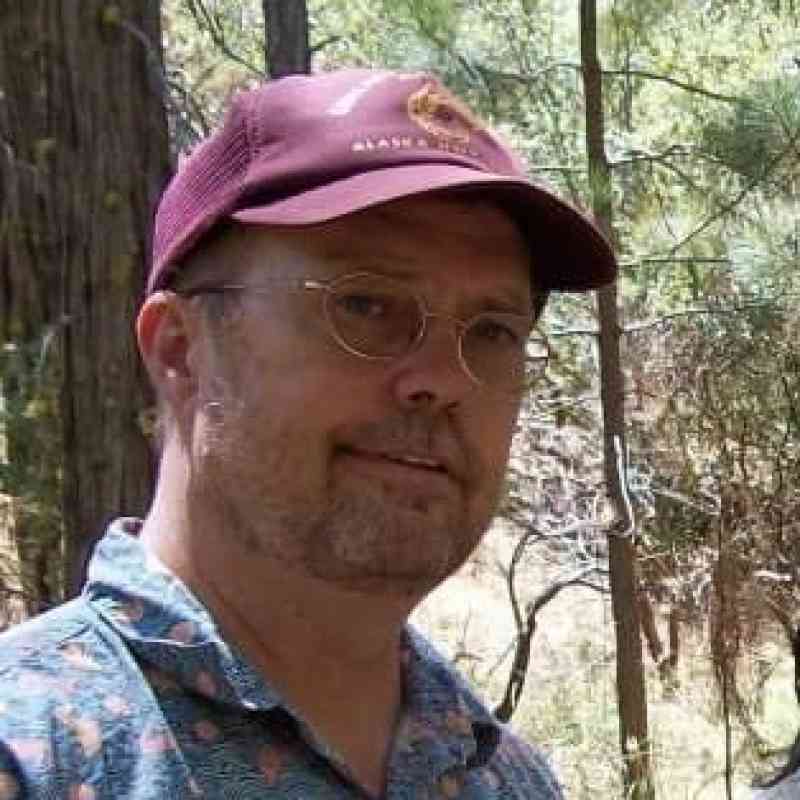
Dr. Jared Aldern
comments

